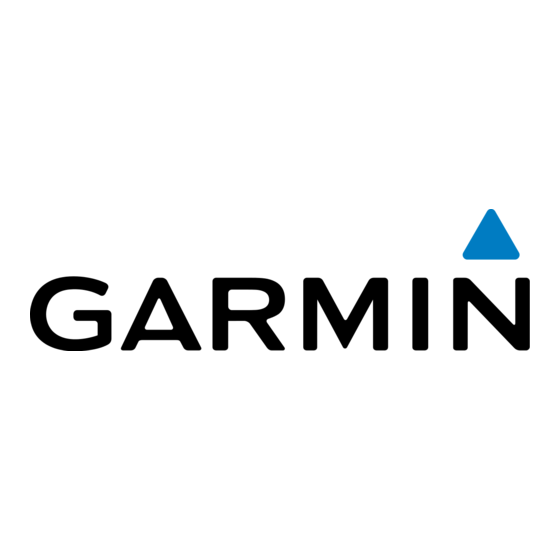Garmin D2 Bravo 소유자 매뉴얼 - 페이지 24
{카테고리_이름} Garmin D2 Bravo에 대한 소유자 매뉴얼을 온라인으로 검색하거나 PDF를 다운로드하세요. Garmin D2 Bravo 28 페이지.
Garmin D2 Bravo에 대해서도 마찬가지입니다: 소유자 매뉴얼 (36 페이지)

Restoring All Default Settings
NOTE: This deletes all user-entered information and activity
history.
You can restore all of the device settings to the factory default
values.
1
Hold UP.
2
Select Settings > System > Restore Defaults > Yes.
Maximizing the Battery Life
You can do several things to extend the life of the battery.
• Reduce the backlight brightness and timeout
Settings, page
17).
• Use UltraTrac GPS mode for your activity
page
15).
• Turn off Bluetooth wireless technology when you are not
using connected features
• When pausing your activity for a longer period of time, use
the resume later option
• Use a Connect IQ watch face that is not updated every
second.
For example, use a watch face without a second hand
(Customizing the Watch Face, page
• Limit the smartphone notifications the device displays
(Managing Notifications, page
Getting More Information
You can find more information about this product on the Garmin
website.
• Go to www.garmin.com/outdoor.
• Go to http://buy.garmin.com, or contact your Garmin dealer
for information about optional accessories and replacement
parts.
Appendix
Data Fields
%FTP: The current power output as a percentage of functional
threshold power.
%HRR: The percentage of heart rate reserve (maximum heart
rate minus resting heart rate).
10s Avg. Power: The 10-second moving average of power
output.
10s Avg Balance: The 10-second moving average of the left/
right power balance.
24-Hour Max.: The maximum temperature recorded in the last
24 hours.
24-Hour Min.: The minimum temperature recorded in the last
24 hours.
30s Avg. Power: The 30-second moving average of power
output.
30s Avg Balance: The 30-second moving average of the left/
right power balance.
3s Avg. Balance: The three-second moving average of the left/
right power balance.
3s Avg. Power: The 3-second moving average of power output.
Ambient Press.: The uncalibrated ambient pressure.
Average HR: The average heart rate for the current activity.
Average Pace: The average pace for the current activity.
Average Power: The average power output for the current
activity.
Average SWOLF: The average swolf score for the current
activity. Your swolf score is the sum of the time for one length
plus the number of strokes for that length
20
(Backlight
(UltraTrac,
(Connected Features, page
(Stopping an Activity, page
16).
13).
(Swim
Terminology, page
used to calculate your swolf score.
Avg. %HRR: The average percentage of heart rate reserve
(maximum heart rate minus resting heart rate) for the current
activity.
Avg. Ascent: The average vertical distance of ascent since the
last reset.
Avg. Balance: The average left/right power balance for the
current activity.
Avg. Cadence: Cycling. The average cadence for the current
activity.
Avg. Cadence: Running. The average cadence for the current
activity.
Avg. Descent: The average vertical distance of descent since
the last reset.
13).
Avg. Lap Time: The average lap time for the current activity.
Avg. Speed: The average speed for the current activity.
2).
Avg. Strk/Len: The average number of strokes per length
during the current activity.
Avg. Strk Rate: The average number of strokes per minute
(spm) during the current activity.
Avg. Stroke Dist.: The average distance traveled per stroke
during the current activity.
Avg. Vert. Osc.: The average amount of vertical oscillation for
the current activity.
Avg GCT: The average amount of ground contact time for the
current activity.
Avg HR %Max.: The average percentage of maximum heart
rate for the current activity.
Balance: The current left/right power balance.
Baro. Pressure: The calibrated current pressure.
Bearing: The direction from your current location to a
destination. You must be navigating for this data to appear.
Cadence: Cycling. The number of revolutions of the crank arm.
Your device must be connected to a cadence accessory for
this data to appear.
Cadence: Running. The steps per minute (right and left).
Calories: The amount of total calories burned.
Compass Hdg.: The direction you are moving based on the
compass.
Course: The direction from your starting location to a
destination. Course can be viewed as a planned or set route.
You must be navigating for this data to appear.
Dest. Location: The position of your final destination.
Dest. Name: The last point on the route to the destination. You
must be navigating for this data to appear.
Dist. Remaining: The remaining distance to the final
destination. You must be navigating for this data to appear.
Distance: The distance traveled for the current track or activity.
Elapsed Time: The total time recorded. For example, if you start
the timer and run for 10 minutes, then stop the timer for 5
minutes, then start the timer and run for 20 minutes, your
elapsed time is 35 minutes.
Elevation: The altitude of your current location above or below
sea level.
ETA: The estimated time of day when you will reach the final
destination (adjusted to the local time of the destination). You
must be navigating for this data to appear.
ETE: The estimated time remaining until you reach the final
destination. You must be navigating for this data to appear.
3). In open water swimming, 25 meters is
Appendix
